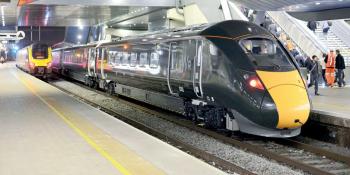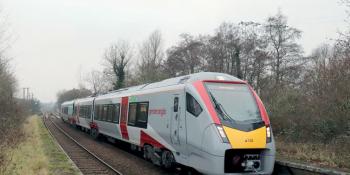But the data are a bit weird
Informed Sources

As mentioned in last month’s column, the Department for Transport’s High Level Output Obfuscation (I think you mean Specification – Ed), was padded out with some passenger demand forecasts. These showed the change in peak demand over the five years of Control Period 6 (1 April 2019 to 31 March 2024) and looked very ho-hum.
But then I entered the numbers into a spreadsheet and calculated the percentage increases (Tables 7 and 8). Whereupon they became very interesting. While ministers and the Rail Delivery Group blather on about ‘the fastest growing railway in Europe’, DfT reckons that peak ridership into the main regional stations and London termini over the five years – five years, note, not per annum – will be 3%.
To get this figure I excluded the two outliers, King’s Cross and Liverpool Street (excluding Crossrail). At these two stations, a Compound Annual Growth Rate of 5-6% is expected.
BEST ASSESSMENT
In the HLOS, DfT explains that the forecasts of demand are the Department’s ‘best assessment using available models and based on available information and plausible assumptions’. The figures for Crossrail come from the Transport for London Crossrail demand model and the Paddington numbers include all demand on Crossrail services when the full service starts in late 2019. Paddington and Liverpool Street terminating demand were generated by DfT’s Network Modelling Framework. Of course, demand forecasts have a role in franchise procurement and DfT notes that it is ‘at risk’ for the forecast at the start of Control Period 6 (2019-24) and any variance in the forecasts between the start and end of CP6.
SOURCES
Central to any analysis of this question is the source of the numbers. In London & the South East, growth has been based on revenue figures with passenger journeys or passenger miles derived through the application of the appropriate algorithms.
This quick and dirty approach is fine when the good times roll. But when growth is slowing, actual ridership data are needed.
For example, weekly season ticket sales in L&SE have fallen by around 5% year-on-year for the past couple of years. But that doesn’t tell you anything useful about changing travel patterns.
South West Trains’ response was to download historic data from the barrier gates at Waterloo. This recorded how often and at what time each gate opened to let a passenger through. From this information you could derive variations in ridership by time of day, day of week and so on.

This revealed there had been little or no peak hour growth over the past five years. The increase in ridership has come from travellers shifting to the shoulders of the peak, to avoid full and standing trains, plus rising travel in directions against the peak. According to one informed source, ridership growth on down Windsor line trains from Clapham in the morning peak has been ‘amazing’.
Given the sustained growth on L&SE services since 2010-11, expecting around 3% in total over the next five years might seem overly pessimistic. However it appears justified by the latest statistics.
Table 9 shows the Office of Rail & Road’s passenger journey statistics since growth renewed after the dip following the global financial crisis.
Note that last year (2016-17) L&SE passenger journeys fell by half a percent. In contrast passenger journeys in the Long Distance and Regional sectors increased by 3.8% and 3.9% respectively.
This is one of those cases where readers can draw their own conclusions from the data. For example, reader Andrew Bodman wrote to point out that Euston operators London Midland, London Overground and Virgin Trains are still showing sustained growth, making the 2023-24 figures look significantly understated.
PUZZLEMENTS
And what on earth is going on at Liverpool Street, where terminating services enjoy 20% growth while Crossrail appears to have zero growth over its phased introduction? Similarly at Paddington Crossrail.
Finally at King’s Cross, the mind boggles, with the highest growth of any London station, despite losing some Great Northern services to Thameslink. Is this growth based on the original Virgin Trains East Coast business plan with the full Inter-city Express Programme timetable introduced in 2019?
I am tempted to conclude that these tables were cobbled together to pad-out an HLOS which, in effect, tells ORR ‘Dunno, come back in October when we may have a better idea of what’s happening’. On the other hand, if you take the figures seriously, some recently-awarded franchises must be fretting over their business plans.







